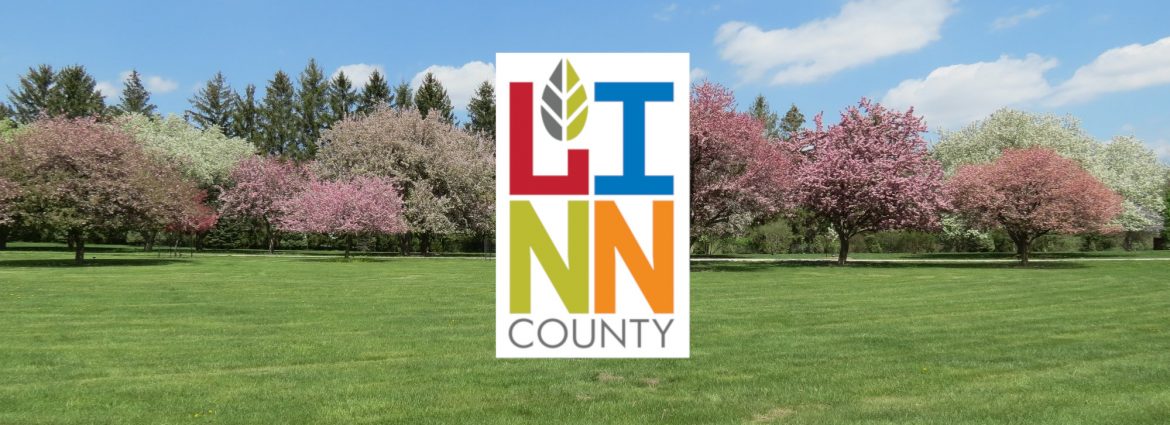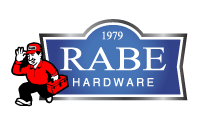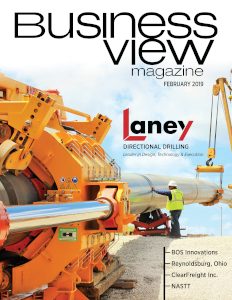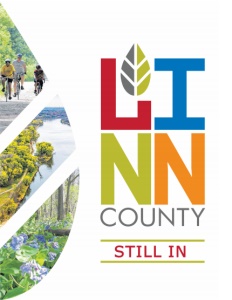Linn County, Iowa
Still in
Business View Magazine interviews representatives from Linn County, IA, as part of our focus on best sustainable practices of governmental institutions.
Linn County, Iowa, located in the east central portion of the state, was created in 1837 as part of the Wisconsin Territory, and then became part of the Iowa Territory the following year. The county was named after Lewis Fields Linn, a physician and politician from Missouri who represented that state in the U.S. Senate. The county seat and its largest city is Cedar Rapids. In 1859, the first rail line was built through Cedar Rapids, helping to make the town, and the county, a major commercial hub in eastern Iowa. Today, Linn County’s population is 218,000; Cedar Rapids’ is 133,000.
Linn County’s main industries are manufacturing, healthcare & social assistance, finance & insurance, and retail. Others include utilities, mining & quarrying, oil & gas extraction, and professional, scientific & technical services. The county’s home ownership rate is 74 percent, with an average of two cars per household. A three-member Board of Supervisors serves as the administrative and policy-making body for Linn County and oversees the programs and departments that serve its residents and businesses.
Recently, Business View Magazine spoke with three Linn County officials: Les Beck, Director of Planning & Development; Jim Hodina, Environmental Public Health Manager; and Dennis Goemaat, Director of the Linn County Conservation Department. Each spoke about a particular project or two under his purview, all of which related to Linn County’s 2013 Comprehensive Plan that articulates goals for Alternative & Renewable Energy, Economic Development & Employment Opportunities, Hazard Planning, Livable Communities, Resource Protection, Sustainable Development, and Transportation. The Plan was based, in part, on Iowa’s Smart Planning Principles, which promote resource management, clean, renewable and efficient energy solutions, and development that conserves land, protects historic resources, and integrates different uses of property.
“When we went out to the public to try to gauge its priorities on issues, resource protection was ranked as the top issue,” says Beck. “That includes agricultural resources as well as natural resources. And the issue of alternative or renewable energy was ranked as the second highest priority.”
A major project undertaken by Beck’s department was the creation of the Dows Farm Agri-Community. An agri-community is a development built around a working farm – one that is relatively small and uses farming practices that minimize the impacts on the surrounding development. The County’s vision for Dows Farm includes: incorporating and protecting the site’s significant environmental features, respecting its agricultural heritage, and providing a mix of housing types with a thoughtful integration of commercial uses. “The Dows Farm project is certainly one that we think is a unique project in a number of ways,” says Beck. “It’s an economic development initiative, plus a quality of life initiative that will translate into business attraction and growing the population.”
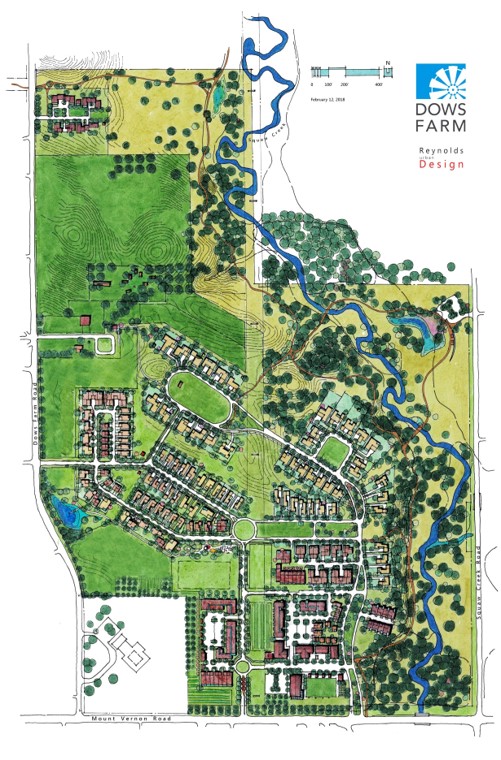 In 2016, Beck says the County acquired 485 acres of land in two different tracts. “The County really had its eye set on about a 306-acre tract for conservation purposes, adjacent to an existing county park,” he recalls. “The intent was to expand the conservation footprint through this additional acreage. The other chunk – 179 acres – sort of came along for the ride. It was part of the package deal, and it was always the County’s intent to divest itself of that property for development purposes. Our Board of Supervisors chose to put together some development guidelines, or a vision for this property that, as it was developed, would be done in a manner that is in harmony with the Comprehensive Plan.”
In 2016, Beck says the County acquired 485 acres of land in two different tracts. “The County really had its eye set on about a 306-acre tract for conservation purposes, adjacent to an existing county park,” he recalls. “The intent was to expand the conservation footprint through this additional acreage. The other chunk – 179 acres – sort of came along for the ride. It was part of the package deal, and it was always the County’s intent to divest itself of that property for development purposes. Our Board of Supervisors chose to put together some development guidelines, or a vision for this property that, as it was developed, would be done in a manner that is in harmony with the Comprehensive Plan.”
The County put together a concept plan that targeted half the tract for conservation open space, including a stream buffer along an existing creek. “25 percent is going to keep the old farmstead site and about 40 acres of farmland in a small working farm, with the intent to grow healthy foods using sustainable farming practices,” Beck explains. “The remaining 25 percent is what’s going to be developed with a mix of residential and commercial uses that includes a range of housing types and price points that we hope will meet multi-generational housing needs – anywhere from the college graduate apartment renter, to the first-time home buyer, all the way to the retired, empty nester.”
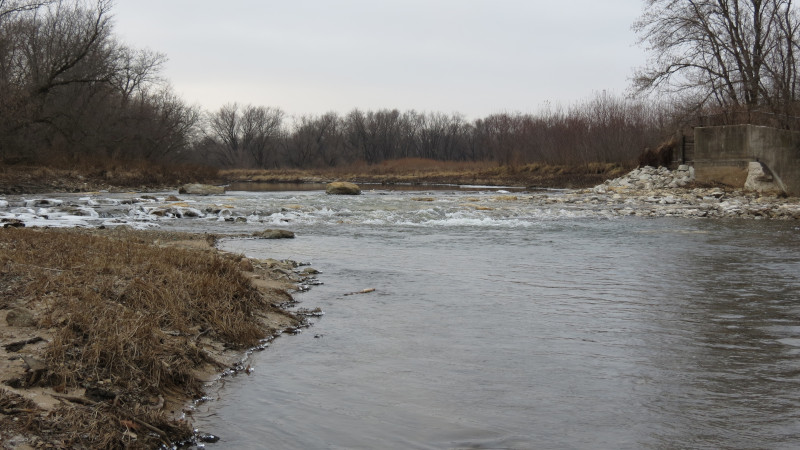
Roller Dam Conversion
According to Beck, Phase One of the Dows Farm project, the initial concept planning, is done. “We are into Phase Two, right now,” he states. “We’re doing a market feasibility study; we’re doing some traffic studies; our consultant is working on the development guidance documents that will be used for developers. Then, the County will issue RFPs to developers. Phase Two runs into June or July. So we’re probably a good 12-18 months away from any type of groundbreaking.”
While the Dows Farm project proceeds, the Linn County Conservation Department, which is overseen by a group of five citizens appointed by the Board of Supervisors, is working on implementing a Master Plan it completed in 2015 that directs how the county’s parks and open spaces can best continue to serve the community as the county continues to develop. “It came up with quite a list of projects,” says Goemaat, “and then the question became how to start implementing them”
“A feasibility study was undertaken for the options, one of which was a bond referendum,” he continues. “The Conservation Board, working with the Board of Supervisors, decided in 2016, to place that question on the ballot in the general election: ‘Shall Linn County sell $40 million worth of bonds for the purposes of water quality and land protection, park development, park improvement, and hiking and biking trails?’ It passed with 74 percent support from Linn County residents. The County committed 55 percent of the bond funds to water quality and land protection, equating to $22 million; 30 percent of the funds will go to parks, which is $12 million; and 15 percent will go to trails, so that’s $6 million. A little over 25 percent, or $12 million, of the total bonds have been sold. Those bonds have allowed 31 projects to move forward to date. Seventeen of those are related to water quality and land protection, eight projects are for park development, and six are trail-related.”
On the renewable energy front, Beck reports that Linn County has received a SolSmart Gold designation from the SolSmart program which is funded, in part, by the U.S. Department of Energy Solar Energy Technologies Office. “It’s intended to help governments become more solar-friendly by lowering the soft costs to solar development – basically streamlining the permit review and application process,” Beck notes. “We received our Gold designation in 2017. There are only three SolSmart Gold communities in the State of Iowa and we’re one of them. In order to do that, we needed to streamline our permitting process, inspections, and fees for consumer-scale solar installations. We amended a number of provisions in our zoning regulations. What was key to this effort was a solar group-buy program that the Public Health Department spearheaded.”
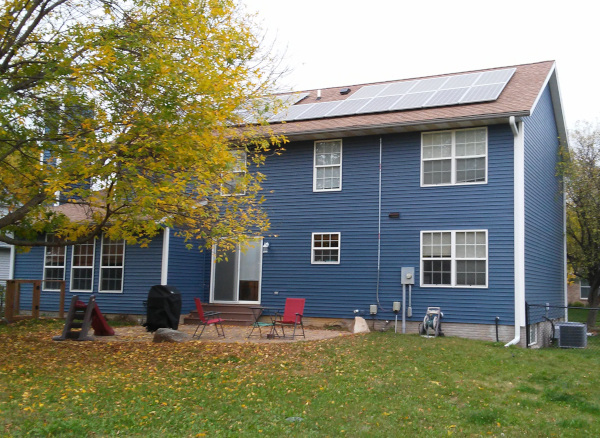
Solar Group Buy
Hodina explains that, hewing to one of Iowa’s Smart Planning Principles, which promotes collaboration among governmental, community, and individual stakeholders, his Department partnered with the City of Cedar Rapids and the Midwest Renewable Energy Association to solicit solar installers, asking for a unit price for installed solar based on volume.
“We got several bids from several qualified installers and we selected the one that we felt had the best price, and the best product and service,” Hodina relates. “In a three-month campaign, we held 23 community outreach events; we had seven media events with interviews in the paper and television, and we signed up over a hundred residents within that three-month period to install solar at this reduced price.” “Over the last two years, since January of 2017, in large part because of the group-buy, there’s been a significant uptick in terms of solar permits that we’ve issued,” Beck adds.
The mandate of the Environmental Health Division at Linn County’s Public Health Department is to maintain and administer the County’s air quality control program under the federal Clean Air Act and the state’s implementation plan for clean air. Hodina believes that the 104 solar systems installed under the group-buy plan have had a measurable effect on the quality of Linn County’s air – and he has the numbers to prove it. “We used EPA methodologies to know that we reduced CO2 emissions, annually, by 740 tons; 1,400 pounds of sulphur dioxide emissions; and some other pollutants as offsets based on emissions from our power grid. We also fed 607 kilowatts back into the system. We were recognized last summer by the National Association of City and County Health Officials for this approach as a promising practice.”
Hodina continues: “Air quality is a very important program for our community and for sustainability. We are in attainment for all of the ambient air quality standards established by the EPA, and yet we are, by far, the most heavily industrialized county in Iowa. We have 17 of what are defined as major sources (of pollution) by the Clean Air Act and we have a coal-fired power plant, as well. So, maintaining that status is very important from an economic development perspective. If you’re not in attainment, to build or expand capacity that would further degrade air quality, you’re required to install more costly and stringent emission controls on equipment; you’re also expected to buy offsets and things like that. Whereas, if you maintain compliance with the ambient air quality standards, then you have some room for growth within that buffer. So, we monitor air quality and we enforce administrative permits and compliance with federal, state, and local standards.”
Hodina’s Division also keeps watch over vehicle emissions. “They make up about 35-40 percent of the air pollution generated in Linn County,” he proffers. “So, through the efforts of the Board of Supervisors, we passed a policy to adopt anti-idling and a method for controlling emissions from our fleet vehicles. We’ve been working with school districts on their busses; we’ve also done monitoring around schools to see that when they let out, and all the parents are lined up in front, and their cars are running, air pollution levels are actually double or triple. So, we’ve tried to promote voluntary policies with the County and other municipalities, school districts, and so forth, to adopt similar measures. In that regard, we’re trying to lead by example.”
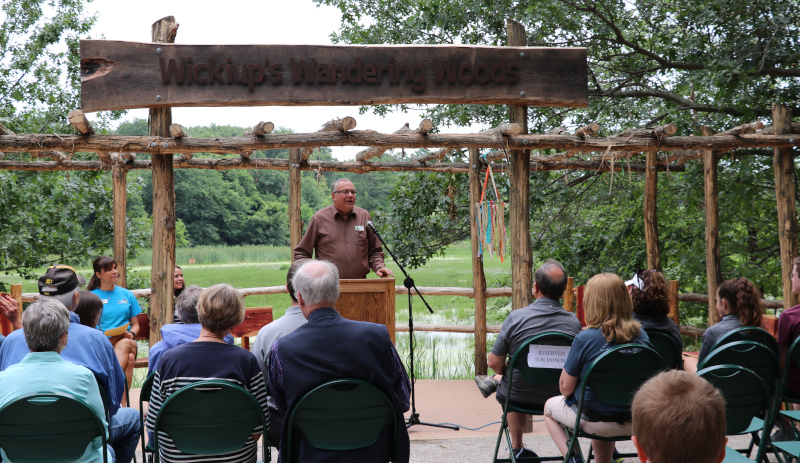
Dennis Goemaat
In addition to maintaining air quality, Linn County also intends to take advantage of its strength in the form of wind energy. “Back in 2009, the Iowa legislature adopted code provisions that allowed local governments to become designated as small wind innovations zones if they did certain things to try to streamline the permitting process for small wind energy conversion systems – that’s defined as anything that’s 100 kilowatts or less,” says Beck. “So, we went through that process in 2012, and received the designation. There are only three counties in Iowa designated as small wind innovations zones and we’re one of them.”
In order to know if wind energy is even economically viable in Linn County, Beck’s Department partnered with the Iowa Initiative for Sustainable Communities (IISC) to conduct a wind farm feasibility analysis. The IISC is an initiative out of the University of Iowa that pairs faculty and students with Iowa communities on a range of different projects. “When I look at a wind map of Iowa, the most suitable part of the state for wind energy development is up in the northwest,” Beck opines. “Then, as you travel east and southeast, the suitability gets lower and lower. So, I wasn’t really anticipating much demand for a wind farm in Linn County. Then about a year ago, there was one that popped up in Blackhawk County, which is two counties to the north of us, so we thought we’d better get ourselves ahead of the curve a little bit. If a utility company or a wind developer wanted to propose a wind farm in Linn County, where might they propose it and what might some of the issues be that we would need to be aware of in terms of our review process?
“So, we partnered with the IISC on this project and they’ve done a bang-up job looking at wind suitability specific to Linn County. They’ve taken our existing zoning regulations and from a GIS mapping standpoint identified some opportunities and constraints for wind farm development. They’re putting together an evaluation guidebook that we can use at the staff level in our analyses. If we ever do get a proposal for a utility scale wind farm, then the information they’re providing for us will be helpful as part of our review of that proposal. The final thing they’re going to do for us is to put together a public outreach effort; we want to gauge the appetite of our residents for alternative and renewable energy development, in general, but then, specifically, what their attitudes are for utility-scale wind farms.”
Finally, in a testament to Linn County’s strong support of environmentally-friendly goals and systems, in 2017, the Linn County Board of Supervisors unanimously approved a resolution supporting the objectives of the Paris Climate Agreement and approved Linn County’s registration in the “We Are Still In” Coalition. Signing the resolution signals Linn County’s commitment to continue honoring the objectives of the Paris Agreement and the principles of energy efficiency and energy conservation. For that stance, Linn County received a 2017 “Sunny Award” from Iowa-350, a grassroots organization focused on sustainability campaigns to preserve a livable planet.
AT A GLANCE
WHO: Linn County, Iowa
WHAT: A county of 218,000
WHERE: East central Iowa
WEBSITE: www.linncounty.org
PREFERRED VENDORS
Rabe Hardware – rabehardware.com
Rabe Hardware, Eastern Iowa’s leader for comfort and energy savings, has seen a steady shift in customer attitudes towards energy efficiency since they opened their doors back in 1979. As the demand for energy continues to grow each year, it’s no surprise that energy consumption and efficiency has become more critical. Each year, more and more Iowans turn to Rabe Hardware for energy saving solutions that not only improve efficiency but also lower operating costs in an environmentally responsible way. With geothermal, solar or a combination of both; homeowners and businesses can achieve instant savings, lock in energy costs and produce clean renewable energy for decades to come.
Geothermal heating and cooling systems, also known as Ground Source Heat Pumps (GSHP), transfer heat versus burning fuel to create it. This efficient use of energy transfer makes geothermal systems 400 percent efficient, compare that to the most efficient gas furnace available today which is only 98 percent efficient. On average a geothermal system produces annual savings up to 70 percent on utility bills and offers a quiet, clean and safe alternative to traditional HVAC systems.
Solar panels provide on-site power generation and are another popular choice for homeowners and businesses looking to reduce or completely eliminate their electric bills. A solar PV (photovoltaic) system harnesses the sun to produce clean, cost-efficient solar power for all your electrical needs. Over the last 10 years, the cost to install solar panels has dropped significantly while the technology and durability has improved. Due to these factors, a solar PV system is a more economical energy solution with shorter paybacks than ever before.
According to the Internal Revenue Code (IRC) Section 48, solar and geothermal qualify for a Renewable Energy Investment Tax Credit (ITC). Temporarily, the credit rate for solar is 30 percent through 2019, before being reduced to 26 percent in 2020 and 22 percent in 2021; while an investment in geothermal (GSHP)HP currently qualifies for a 10-30 percent ITC through 2021. Generous solar and geothermal state tax credits, utility incentives and commercial rapid depreciation also help significantly reduce upfront costs and improve return on investment.
Rabe Hardware has been a long-time advocate of renewable energy and is widely recognized as one of Iowa’s most trusted solar and geothermal experts. To learn more about the benefits of solar and geothermal or to schedule a free consultation visit RabeHardware.com.
